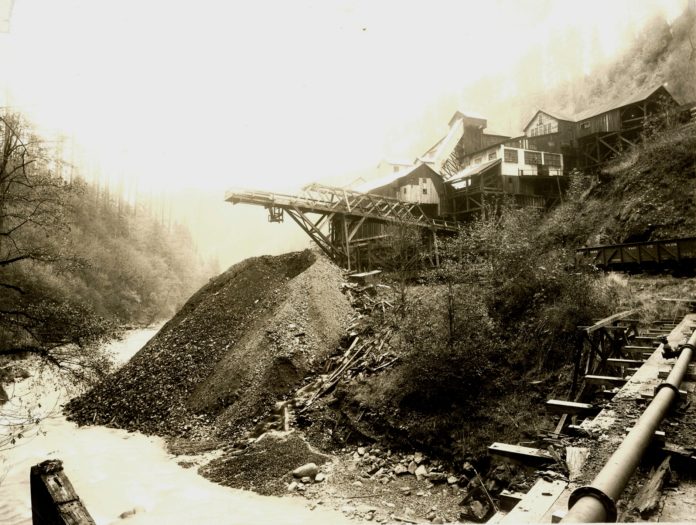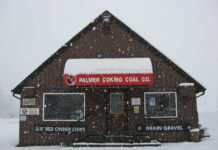This mine tipple on the Carbon River was labeled No. 1.4 on the back of a photo from the studios of Frank Jacob as collected by Frank Guidetti. In the early days of coal mining in Carbonado, the easiest way to dispose of waste rock and shale from the processing of coal was dumping it in the river, to be washed downstream. The Carbonado mines owned by the Carbon Hill Coal Co. were some of the largest producers in Washington. Carbonado’s success came from the hard work of three pioneering men: Robert Wingate, David Davies, and Lewis Davies. Wingate opened the mine and platted the town on flat ground above the river. Its most productive coal seam was named in his honor a few months before the mine’s first coal train was bound for Tacoma in December 1880. Following its acquisition by Carbon Hill the new company hired David Davies, formerly with the Southern Pacific Railroad to run the mines and town. After his death in 1901, his brother Lewis Davies continued as superintendent, but faced periods of change.
Just as coal replaced wood in the second half of the 1880s, oil began replacing coal in the early 1900s. The Southern Pacific, which purchased much of the Carbonado’s output began converting locomotives to oil, it having recently been discovered in California. Yet significant production continued under Carbon Hill’s management until 1924 when the Carbonado mines were sold to Pacific Coast Coal Co. They operated until 1937, then closed. Renton’s Strain Coal Co. opened a new mine but that shut down in 1940. That marked the era of major mining succeeded by small gypo miners, the most notable being the Queen Coal Co. Nonetheless, over a period of six decades, the Carbonado mines produced 10.7 million tons from 1882-1940 comprising nearly half of Pierce County’s coal production.







